STUNNING HMPK BETTA MALE RANDOMLY SELECTED FRESH WATER LIVE FISH, Beautiful Betta Splendens for Vibrant Aquariums, Enhance Your Fish Community with These Intelligent Friends, Aesthetic Appeal for Any Tank
£10.49 Original price was: £10.49.£8.71Current price is: £8.71.
Welcome these stunning HMPK Betta male fish, randomly selected for their vibrant colors and graceful movements. Ideal for aquarists seeking beautiful Betta splendens, they thrive in well-maintained freshwater environments, adding elegance to any aquarium community.
992 in stock
Species Introduction
The HMPK Betta Male, scientifically known as Betta splendens, is a captivating freshwater fish that originates from the lush waters of Southeast Asia, particularly Thailand, Cambodia, and Vietnam. These beautiful creatures are well-known for their vibrant colors and flowing fins, making them a popular choice among aquarists. The HMPK (Half-Moon Plakat) variety is especially cherished for its unique fin structure, which combines the short body of the Plakat with the long, flowing fins of traditional Betta fish. This combination creates a stunning appearance that is sure to enhance the visual appeal of any aquarium.
Care Requirements Dashboard
Essential Care Guide for Your HMPK Betta Male
| Optimal Living Conditions | |
|---|---|
| Water Temperature | 24-27°C (75-81°F) |
| pH Level | 6.5-7.5 |
| Water Hardness | 4-12 dKH |
| Minimum Tank Size | 80L (20 gal) |
| Salinity | Freshwater |
| Care Level | Beginner Friendly |
✓ Care Level: Easy
Natural Behavior & Temperament
The HMPK Betta Male is known for its fascinating behavior and intelligence. These fish are highly interactive and can recognize their caregivers, often greeting them with excitement when approached. They exhibit a range of behaviors, from playful swimming patterns to displaying their vibrant colors when feeling confident. In their natural habitat, they thrive in slow-moving waters, where they can explore vegetation and find hiding spots. This species is generally territorial, especially males, and can display aggressive behavior towards other males. Therefore, it is essential to provide adequate space and hiding spots to reduce stress and aggression.
Tank Setup Guide
Creating an ideal environment for your HMPK Betta Male is crucial for its health and well-being. Begin with a tank size of at least 5 gallons to provide ample swimming space. The substrate should be soft, such as fine gravel or sand, to protect their delicate fins. Incorporate live plants like Java Fern or Anubias, which not only enhance the aesthetic but also provide hiding spots and improve water quality. Use decorations that are smooth and free of sharp edges to prevent injuries. Maintaining a gentle filter is essential, as strong currents can stress these fish. Additionally, a heater is necessary to keep the water temperature stable, as Betta fish thrive in warm waters.
Water Quality Management
Maintaining optimal water quality is vital for the health of your HMPK Betta Male. Regular water changes of 25-30% weekly will help keep ammonia and nitrate levels low. The ideal pH level for Betta fish is between 6.5 and 7.5, and it is essential to monitor this regularly using a reliable test kit. The water hardness should be maintained between 4 to 12 dKH. Additionally, ensure that the temperature remains between 24°C and 27°C (75°F and 81°F) using an aquarium heater. Sudden changes in water parameters can stress your fish, so always acclimate them slowly to any changes.
Feeding & Nutrition
Feeding your HMPK Betta Male a balanced diet is essential for its health and vibrancy. These fish are carnivorous and thrive on a diet rich in protein. High-quality betta pellets should form the base of their diet, supplemented with frozen or live foods such as bloodworms, brine shrimp, and daphnia. A feeding schedule of 2-3 small meals per day is recommended to prevent overfeeding and maintain water quality. Always remove any uneaten food after a few minutes to prevent decay and maintain water clarity. It is also beneficial to occasionally provide plant-based foods to ensure a well-rounded diet.
Compatibility Guide
When considering tank mates for your HMPK Betta Male, it is crucial to choose peaceful species that can coexist without provoking aggression. Suitable companions include small tetras, guppies, and rasboras. Avoid keeping multiple male bettas together, as this can lead to territorial disputes. Additionally, larger or fin-nipping species should also be avoided, as they can stress your betta. A well-planned community tank with plenty of hiding spots and swimming space will promote harmony among your aquatic friends.
Health & Wellness
Maintaining the health and wellness of your HMPK Betta Male involves regular monitoring for signs of illness and stress. Common issues include fin rot, ich, and velvet disease. To prevent these conditions, ensure good water quality and avoid overcrowding. Regularly inspect your fish for any changes in behavior, such as lethargy or loss of appetite, which can indicate health problems. If any issues arise, prompt treatment is essential. Quarantine any new fish before introducing them to your main tank to prevent the spread of disease.
Breeding Information
Breeding HMPK Betta Males can be a rewarding experience for aquarists. To successfully breed these fish, begin by conditioning both the male and female with high-quality foods for several weeks. Create a breeding tank with a gentle filter and plenty of floating plants for the female to lay eggs. The male will build a bubble nest at the water’s surface, which is essential for the fry’s survival. After spawning, the male will guard the eggs and fry, while the female should be removed to prevent aggression. Fry care involves providing infusoria or finely crushed flakes until they are large enough to eat baby brine shrimp.
Acclimation Process
Acclimating your HMPK Betta Male to a new tank is a critical step to ensure its health. Begin by floating the sealed bag in the aquarium for about 15-20 minutes to equalize the temperature. After this, gradually introduce small amounts of tank water into the bag every 5-10 minutes. This process helps your fish adjust to the new water parameters. After about an hour, gently release the betta into the tank using a net to avoid introducing any contaminants from the bag.
Long-term Care
The lifecycle of a HMPK Betta Male typically spans 2-4 years, depending on the care provided. Regular maintenance of water quality, diet, and tank conditions will significantly impact their longevity. As your betta ages, you may notice changes in behavior or health, which may require adjustments to their care routine. Regular check-ups and maintaining a stress-free environment will ensure your fish remains vibrant and healthy throughout its life.
Natural Habitat Recreation
To recreate a natural habitat for your HMPK Betta Male, focus on replicating the shallow, densely vegetated waters of Southeast Asia. Incorporate live plants, driftwood, and smooth rocks to mimic their natural environment. The use of floating plants can provide shade and security, which is essential for their well-being. Maintaining a gentle water flow and ensuring adequate hiding spots will help your betta feel safe and secure.
Seasonal Care Adjustments
Seasonal changes can affect the care of your HMPK Betta Male. During warmer months, monitor the water temperature closely, as higher temperatures can lead to stress. Ensure that the tank is not placed in direct sunlight to prevent overheating. In cooler months, maintain a stable temperature using a reliable heater. Additionally, adjust feeding schedules based on activity levels, as bettas may be less active in colder temperatures.
Expert Tips
For those looking to provide the best care for their HMPK Betta Male, consider investing in a high-quality water testing kit to regularly monitor parameters. Additionally, providing enrichment through toys or floating plants can stimulate their natural behaviors. Regular observation will help you understand your betta’s personality and preferences, allowing you to tailor their environment and care to their specific needs.
Troubleshooting
If you encounter issues with your HMPK Betta Male, such as changes in appetite or behavior, it is essential to act quickly. Check water parameters immediately, as fluctuations can lead to stress. If your betta shows signs of illness, such as white spots or frayed fins, consider isolating it in a quarantine tank for treatment. Regular maintenance and observation are key to preventing issues before they escalate.
Scientific Background
The Betta splendens belongs to the family Osphronemidae and is a species of freshwater fish. They are known for their vibrant coloration and unique fin structures, which have been selectively bred for various traits. Understanding their taxonomy and natural history can enhance your appreciation for these beautiful fish and their role in aquatic ecosystems. Conservation efforts are vital to protect their natural habitats from pollution and habitat destruction.
Advanced Care Techniques
For advanced aquarists, consider experimenting with breeding techniques to produce unique color variations and fin types. Understanding genetics can help in selecting breeding pairs that will produce desired traits. Additionally, implementing a varied diet that includes high-quality live foods can enhance coloration and overall health. Regularly participate in aquarist communities to share knowledge and learn from others’ experiences.
Water Quality Parameters
Optimal Range
24-27°C
6.5-7.5
0 ppm
Caution Zone
22-24°C or 27-29°C
6.0-6.5 or 7.5-8.0
0.25-0.5 ppm
Danger Zone
<22°C or >29°C
<6.0 or >8.0
>0.5 ppm
Monitoring Tip: Test water parameters weekly and perform regular water changes to maintain optimal conditions for your aquatic friends!
Frequently Asked Questions
Q: What tank size is required for the Stunning HMPK Betta?
The Stunning HMPK Betta, being a labyrinth fish, thrives in a minimum tank size of 20 litres. This size allows ample swimming space and helps maintain stable water conditions. Smaller tanks can lead to stress and poor water quality, which can adversely affect their health. A larger tank also provides room for decorations and plants, which can help mimic their natural habitat and offer hiding spots. Remember, a well-maintained aquarium with proper filtration and regular water changes is essential for the well-being of your Betta. It is advisable to avoid overcrowding, as Betta fish can be territorial and aggressive towards their own kind.
✓ Expert Tip
Consider using a tank divider if housing multiple Betta fish, ensuring each has its own space to reduce aggression.
Q: What water parameters do the Stunning HMPK Betta require?
The Stunning HMPK Betta requires specific water parameters for optimal health. The ideal temperature range is between 24-28°C, with a pH level of 6.5 to 7.5. Regularly monitor ammonia, nitrite, and nitrate levels, keeping ammonia and nitrite at 0 ppm and nitrates below 20 ppm. Using a water conditioner to remove chlorine and chloramine is also advisable. Regular water changes of 25-30% weekly will help maintain water quality. Keeping these parameters stable is crucial, as fluctuations can stress your Betta, leading to health problems. Always acclimatise new fish slowly to avoid shocking them.
✓ Expert Tip
Utilise a reliable water testing kit to regularly check parameters, ensuring a healthy environment for your Betta.
Q: How often should I feed the Stunning HMPK Betta?
Feeding the Stunning HMPK Betta should be done twice daily, providing only what they can consume within 2-3 minutes. It is crucial to offer a varied diet, including high-quality pellets, frozen or live foods such as daphnia or bloodworms, and occasional vegetable matter. Overfeeding can lead to health issues such as constipation and water quality deterioration. A balanced diet not only supports their health but also enhances their vibrant colours. Always remove uneaten food promptly to maintain water quality. Adjust feeding amounts based on your Betta’s size and activity level.
✓ Expert Tip
Consider using a feeding ring to prevent food from floating away, ensuring your Betta can easily access their meal.
Q: What are the best tank mates for the Stunning HMPK Betta?
When considering tank mates for the Stunning HMPK Betta, it is essential to choose peaceful species that won’t provoke aggression. Ideal companions include small schooling fish like neon tetras, rasboras, or guppies. Avoid aggressive or fin-nipping species, as Bettas can become stressed and territorial. It is also wise to keep only one male Betta per tank to prevent fighting. Providing plenty of hiding spots and plants can help reduce stress and territorial behaviour. Always monitor interactions initially to ensure harmony within the tank.
✓ Expert Tip
Introduce new tank mates gradually, observing their interactions before making long-term decisions.
Q: How do I properly acclimatise the Stunning HMPK Betta to my aquarium?
To acclimatise your Stunning HMPK Betta, begin by floating the sealed bag in the aquarium for approximately 15-20 minutes. This helps equalise the temperature. After that, gradually introduce small amounts of aquarium water into the bag every 5 minutes for about 30 minutes. This process allows your Betta to adjust to the water chemistry. Finally, gently net the fish into the tank, avoiding adding the bag water to your aquarium. This method minimises stress and helps ensure a smoother transition into their new home.
✓ Expert Tip
Always acclimatise your fish slowly, as rapid changes can lead to shock and health issues.
Q: What are the signs of a healthy Stunning HMPK Betta?
A healthy Stunning HMPK Betta exhibits vibrant colours, clear fins, and active swimming behaviour. Their eyes should be bright and free from cloudiness, and they should respond readily to food and environmental stimuli. Watch for signs of stress such as lethargy, clamped fins, or excessive hiding, which can indicate poor water quality or health issues. Regular monitoring and proper care practices greatly contribute to your Betta’s well-being. If any unusual behaviour or physical changes occur, it is advisable to investigate potential causes promptly.
✓ Expert Tip
Maintain a routine observation of your Betta, as early detection of issues can lead to better health outcomes.
Q: How do I successfully breed the Stunning HMPK Betta?
Breeding the Stunning HMPK Betta requires a suitable breeding tank with a gentle filtration system and a temperature of around 28°C. Provide plenty of plants for the female to hide in and a spawning cone or flat surface for egg deposition. Introduce the male and female to the breeding tank and observe their courtship behaviours. After spawning, the male will collect the eggs in a bubble nest. Remove the female after spawning to prevent aggression, and ensure the male is monitored until the fry are free-swimming, at which point he can also be removed. Feed the fry with infusoria or finely crushed flakes after they are free-swimming.
✓ Expert Tip
Keep the breeding environment stress-free to encourage successful spawning and healthy fry development.
Q: What temperature should I maintain for the Stunning HMPK Betta?
The ideal temperature for the Stunning HMPK Betta is between 24°C and 28°C. Maintaining a stable temperature within this range is crucial, as fluctuations can lead to stress and health issues. A reliable aquarium heater is recommended to achieve and maintain the desired temperature, especially in cooler environments. Regularly monitor the temperature with an accurate thermometer, and adjust the heater settings as needed. Sudden temperature changes can be detrimental, so always acclimatise your Betta gradually if adjustments are necessary.
✓ Expert Tip
Place the heater near the filter outlet to promote even heat distribution throughout the tank.
Q: How long do Stunning HMPK Bettas typically live in captivity?
In captivity, the Stunning HMPK Betta can live for 3 to 5 years, provided they receive proper care. Factors such as water quality, diet, and tank conditions significantly influence their lifespan. Regular maintenance of the aquarium, including water changes and monitoring of parameters, is essential for their health. A stress-free environment with appropriate tank mates also contributes to longevity. Observing your Betta’s behaviour and health can aid in identifying potential issues early, leading to a longer, healthier life.
✓ Expert Tip
Keep a consistent feeding schedule and maintain optimal water conditions to support your Betta’s health and longevity.
Q: What type of substrate is most suitable for the Stunning HMPK Betta?
For the Stunning HMPK Betta, a substrate that is smooth and gentle on their delicate fins is recommended. Fine gravel or sand works well, as it allows for easy cleaning and is comfortable for the fish. Avoid sharp or coarse substrates, as these can cause injury. Additionally, incorporating live plants can enhance the aesthetic and provide hiding spots, which Bettas appreciate. Regular vacuuming of the substrate during water changes will help maintain a clean environment, reducing the risk of disease.
✓ Expert Tip
Consider adding leaf litter or natural decorations to mimic their natural habitat, offering a more enriching environment.
Q: What behavioural patterns should I expect from the Stunning HMPK Betta?
The Stunning HMPK Betta is known for its curious and interactive behaviour. They often explore their environment, showing interest in their surroundings. Bettas will also display territorial behaviour, especially when they feel threatened or during breeding. Males may flare their fins and display colour to assert dominance. They are generally solitary and prefer to have their own space. Providing hiding spots and plants can help reduce stress and encourage natural behaviours. Regular interaction with your Betta can also strengthen your bond and promote a more active lifestyle.
✓ Expert Tip
Spend time observing your Betta’s behaviour; this will help you notice any changes that may indicate stress or health issues.
Q: How can I prevent common diseases in the Stunning HMPK Betta?
Preventing diseases in the Stunning HMPK Betta involves maintaining excellent water quality and a stable environment. Regular water changes, proper filtration, and monitoring parameters are crucial. Quarantine new fish before introducing them to the main tank to prevent disease transmission. Additionally, provide a balanced diet rich in vitamins and minerals to boost their immune system. Observe your Betta for any signs of illness, such as changes in appetite or behaviour, and take immediate action if necessary. Keeping the tank clean and providing a stress-free environment will significantly reduce the likelihood of disease.
✓ Expert Tip
Research common Betta diseases, so you can quickly identify and address any potential health issues.
Q: What lighting conditions do the Stunning HMPK Betta prefer?
The Stunning HMPK Betta thrives in moderate lighting conditions. Bright lights can cause stress and encourage algae growth, which can be detrimental to their health. A light cycle of 8-12 hours per day is recommended, simulating a natural day-night cycle. Additionally, providing shaded areas in the tank with floating plants or decorations can help your Betta feel secure. Adjust the lighting according to your Betta’s behaviour; if they appear stressed or hide excessively, consider dimming the lights.
✓ Expert Tip
Invest in adjustable lighting to provide optimal conditions and enhance the beauty of your Betta’s colours.
Q: How do I recognise stress in the Stunning HMPK Betta?
Recognising stress in the Stunning HMPK Betta is vital for their health. Signs of stress include hiding frequently, clamped fins, lethargy, and loss of appetite. Additionally, they may display aggressive behaviour towards tank mates or become overly skittish. Changes in colour, such as dulling or fading, can also indicate stress. If you observe any of these signs, it is essential to assess the tank conditions, including water quality, temperature, and tank mates. Addressing the underlying causes promptly can help alleviate stress and promote a healthier and happier Betta.
✓ Expert Tip
Keep a stress diary to track changes in behaviour and water parameters, helping you identify patterns and issues.
Q: What natural habitat conditions should I replicate for the Stunning HMPK Betta?
To create a suitable environment for the Stunning HMPK Betta, replicate their natural habitat found in shallow, slow-moving waters such as rice paddies and swamps. Incorporate plenty of plants, such as Java fern or Anubias, to provide cover and mimic their natural surroundings. Soft, slightly acidic water with a temperature range of 24-28°C is ideal. Additionally, ensure the tank has a gentle filtration system to avoid strong currents, as Bettas prefer calm waters. Adding leaf litter or driftwood can also enhance the tank’s aesthetics and provide additional hiding spots.
✓ Expert Tip
Use natural decorations to enhance the tank’s beauty and provide a comfortable environment for your Betta.

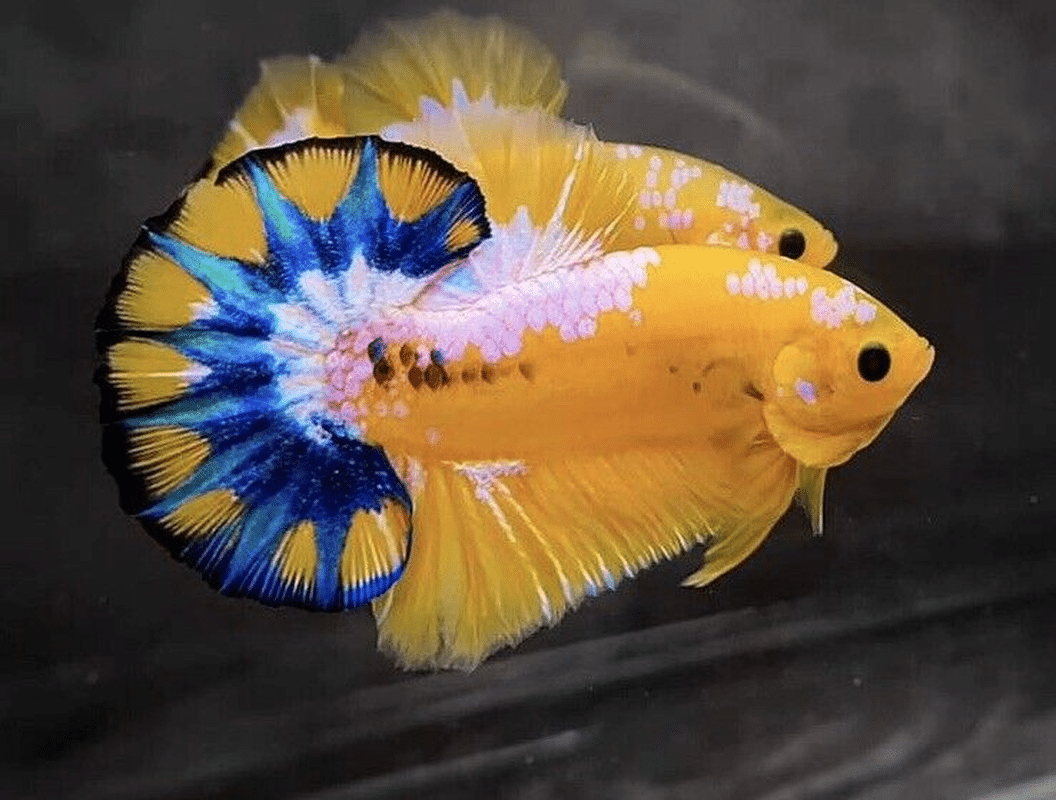
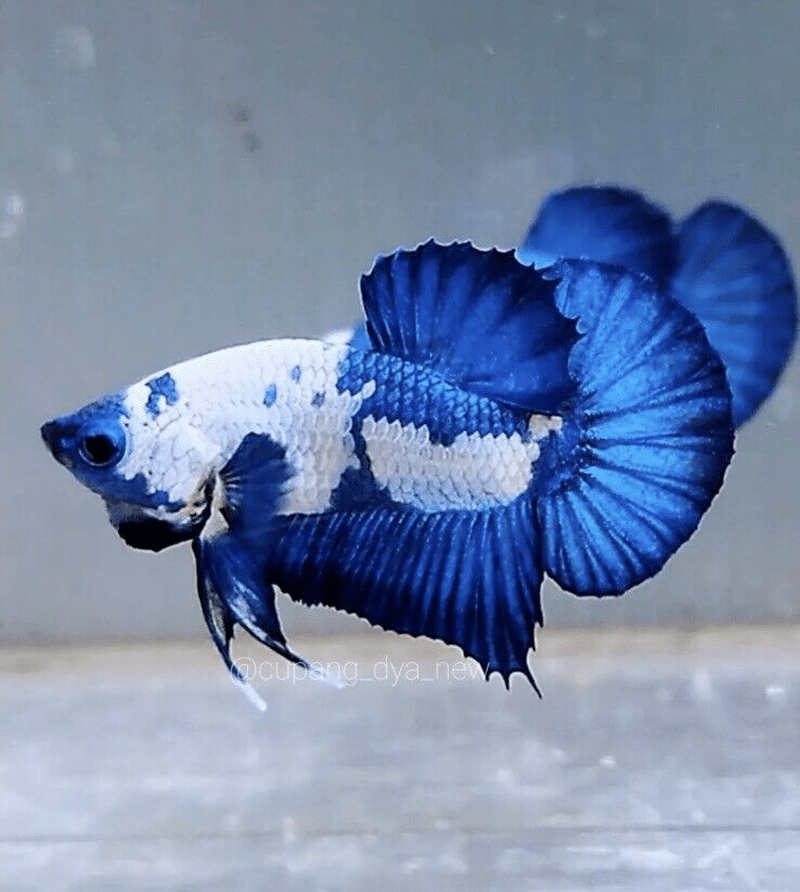



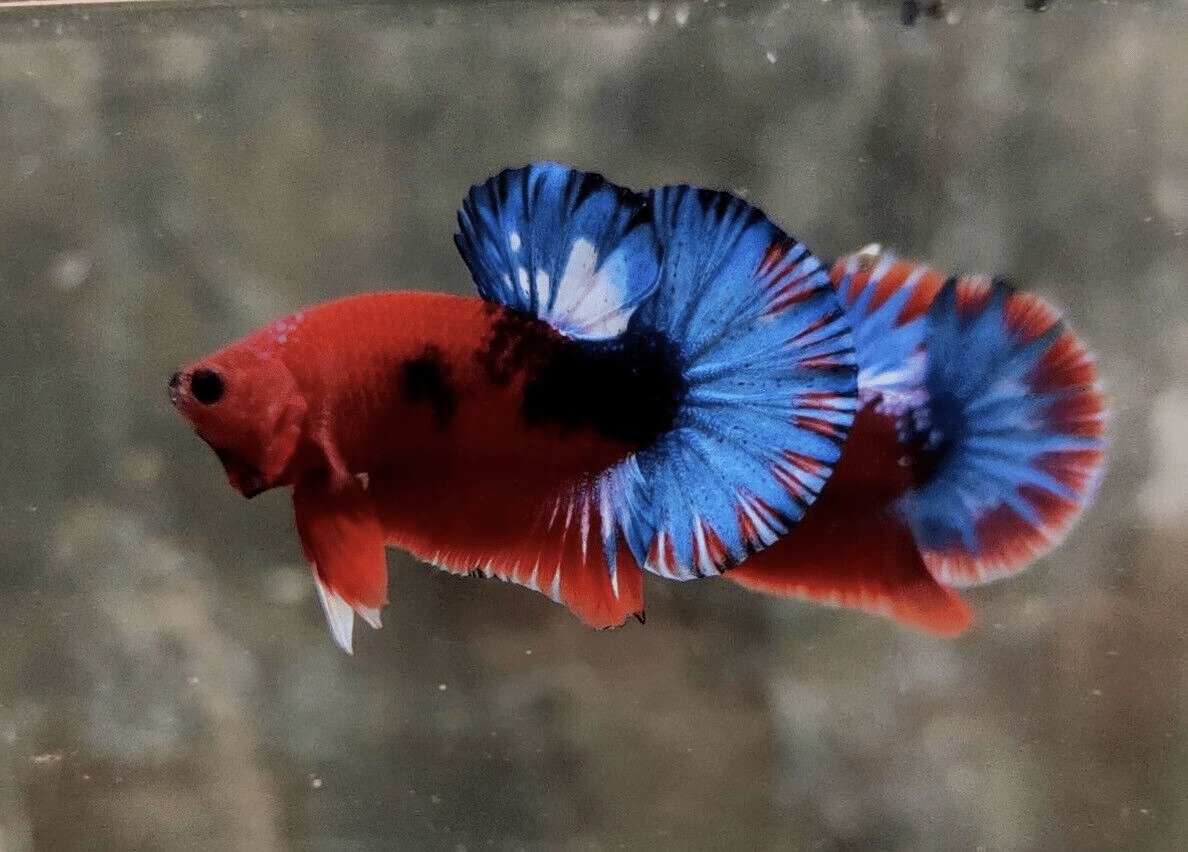


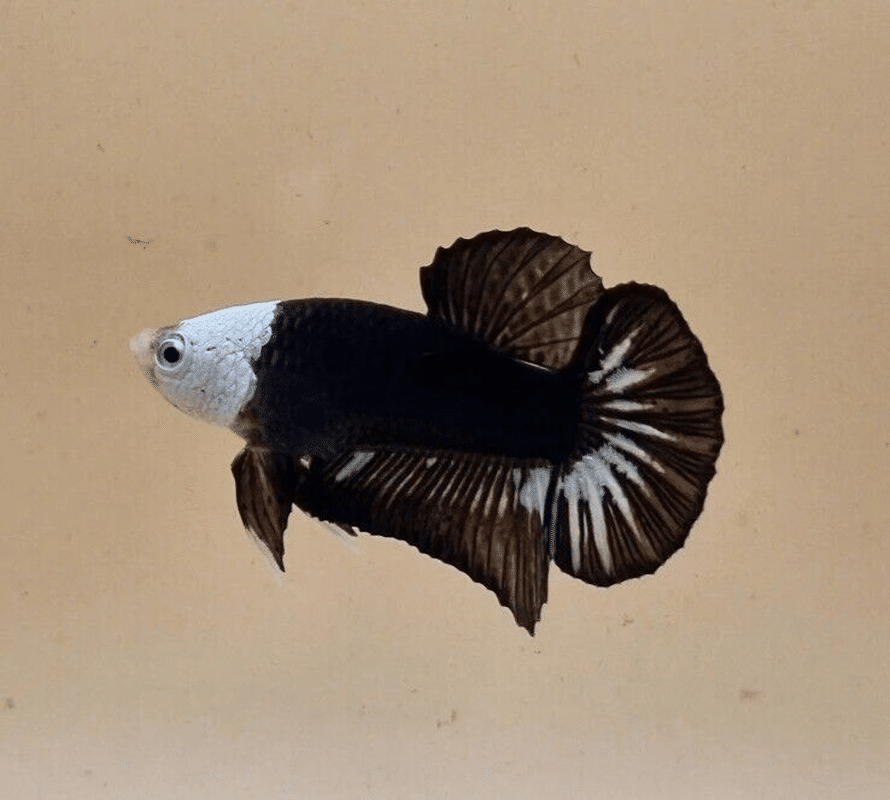
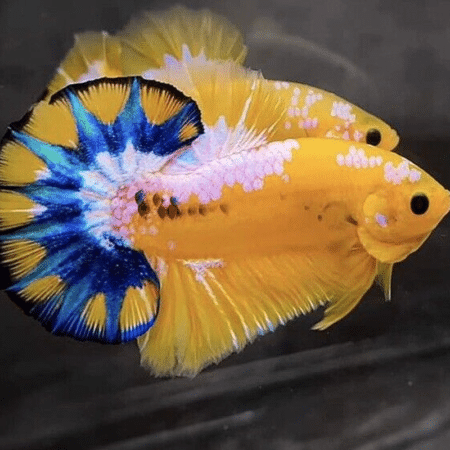

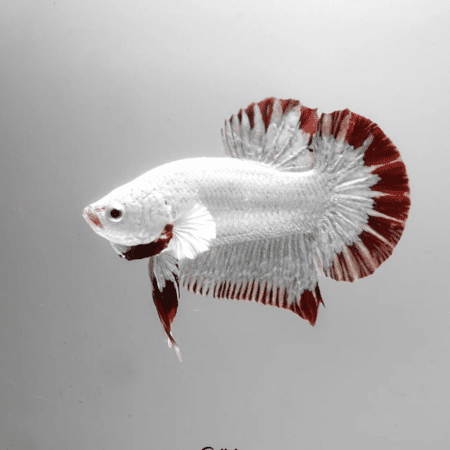



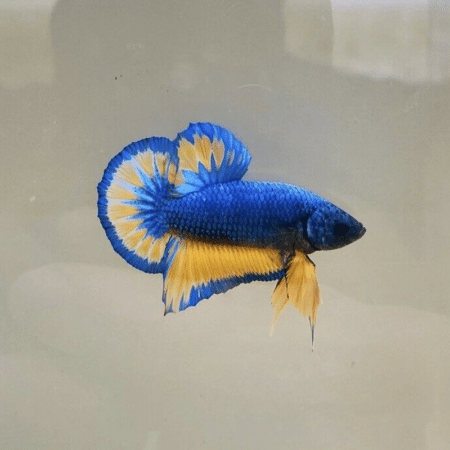


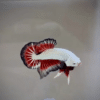
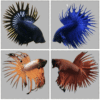









Emma Carter (verified owner) –
I recently purchased the STUNNING HMPK BETTA MALE, and I couldn’t be happier! As a caring fish parent, I prioritize the health and happiness of my aquatic friends, and this little guy has exceeded my expectations. From the moment he arrived, he was vibrant and full of energy. It’s been about two weeks since I added him to my tank, and he’s already settled in beautifully. His colors are even more striking than I imagined, and watching him swim around has brought so much joy to my day-to-day life.
I’ve owned several bettas before, but this one stands out due to his active personality and the quality of his care prior to shipping. Unlike some other sellers where I’ve experienced stress-related health issues in my fish, this little HMPK was in excellent condition and arrived quickly, with clear instructions on acclimation.
I highly recommend this betta to anyone, especially beginners looking for the best fish for a smaller tank. Just be sure to provide him with plenty of hiding spots and plants to keep him happy! I’m definitely considering purchasing another one soon!
Emily Carter (verified owner) –
I recently purchased a Stunning HMPK Betta Male, and I couldn’t be happier! This little guy arrived in perfect health, and his vibrant colors truly light up my aquarium. I’ve been keeping freshwater fish for over five years, and I can honestly say this Betta splendens is one of the most captivating I’ve had. After just one week, he has settled in beautifully, exploring every nook and cranny of his tank. The shipping was prompt, and he arrived well-packaged and stress-free, which is so important for fish welfare.
What I adore about this Betta is his personality; he’s incredibly intelligent and exhibits such unique behavior compared to other fish I’ve owned. The fins are stunning, and his presence enhances the overall aesthetics of my tank. I’ve had Betta fish in the past, but the quality and health of this one really stand out.
One minor thing to note is he can be a bit territorial, so I recommend providing plenty of hiding spots if you plan to add more fish to your community. Overall, this Betta is perfect for anyone looking to bring vibrant life into their aquarium. I highly recommend it to both beginners and experienced aquarists alike! I would definitely buy again!